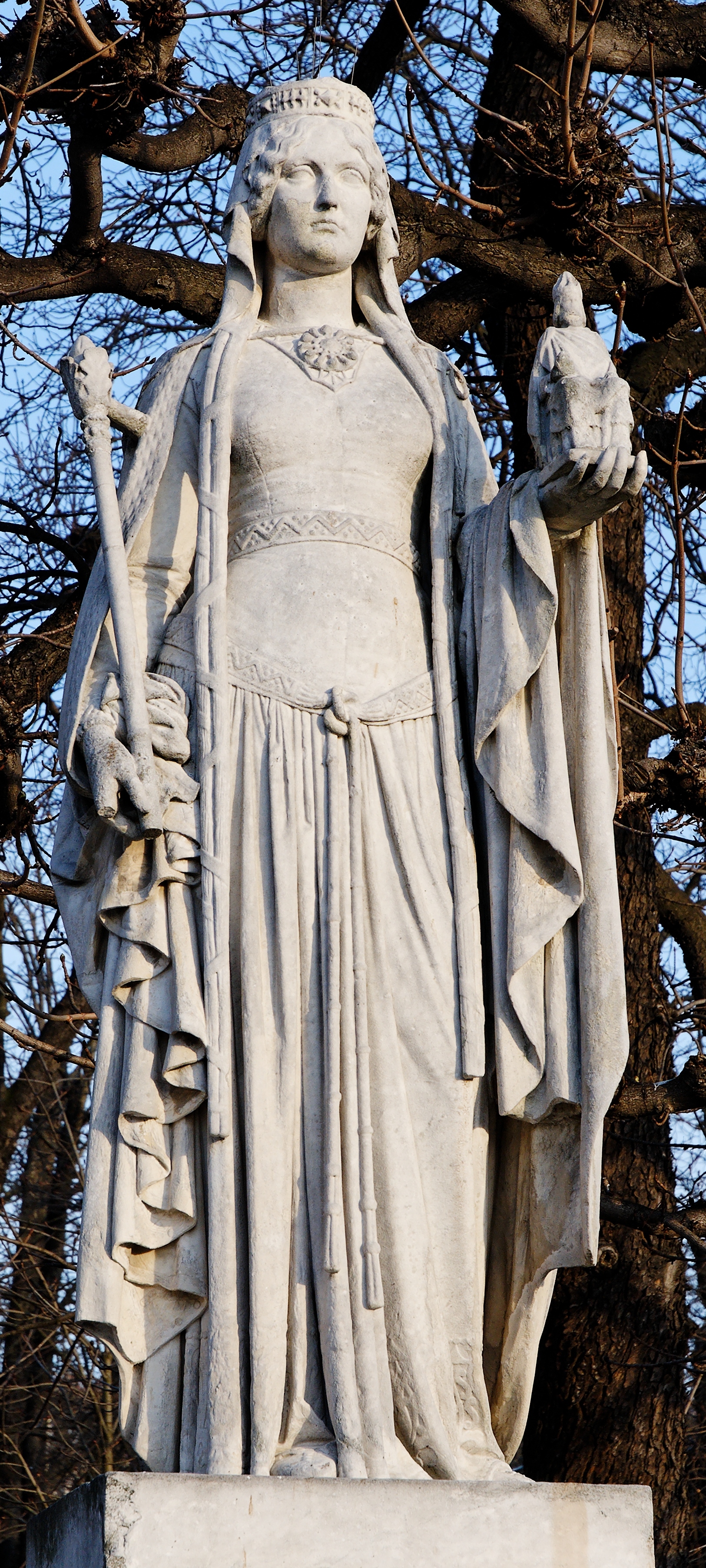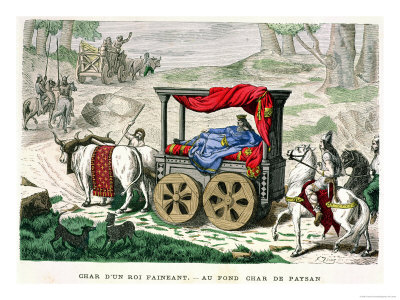 |
| Charlemagne, his children, their tutors |
But wasn't Charlemagne allied with the Lombards' King Desiderius through his marriage to Desiderius' daughter? Not anymore. I glossed over some facts in this post. Just as Pepin the Short put aside Leutberga to marry Bertrada, Charlemagne dumped Desiderata. His second wife was Hildegard of Vinzgouw, who bore several children; Carloman/Pippin was her child, as was Louis the Pious who inherited after Charlemagne. But what about Himiltrude? Probably not a wife, but a paramour whose son by Charlemagne, Pippin the Hunchback, was exiled to a monastery by his father years later after leading a rebellion. And then there was Fastrada, Charlemagne's third wife, whose daughter Theodrada (b.784) became an abbess. Charlemagne took a fourth wife, Luitgard, who died 4 June 800, months before he was crowned Holy Roman Emperor. They had no children.
Ultimately, Charlemagne had 17 recorded children with between eight and ten wives and mistresses. He did his best by them, according to his biographers. Sons and daughters were all educated. When he was home, he took meals with his children. When he traveled, his sons rode with him.
And I want to give some attention to Gisela. Pepin the Short and Bertrada had eight children that we know of, only three of which lived to adulthood. Charles and Carloman you know. Gisela (757-810) was dedicated to religion from childhood (according to Charlemagne's most famous biographer, Einhard), and became a nun at Chelles Abbey. Abbeys and monasteries were often the place where people could be put "out of the way"—under house arrest, as it were, such as with Pippin the Hunchback mentioned above—but that was not the case with Gisela. For one thing, as a woman she posed no threat to her brothers' ambitions. Also, Chelles Abbey appears to have benefited from her presence. Charlemagne's interest in education and the arts is well-known, and Chelles became a tool of the Carolingian Renascence. Chelles became a prolific scriptorium in the 8th and 9th centuries, copying and preserving manuscripts from all over. Gisela would have had welcome company later, when Charlemagne's daughter Rotrude joined her aunt there. Gisela probably joined the abbey too late to meet her step-grandmother: Charles Martel had also had more than one wife, and his second, Swanachild, was put in Chelles after Charles' death, when she failed in her attempt to help her son Grifo claim some inheritance from his half-brothers, Pepin the Short and Carloman.
I am always curious about the bystanders, the people involved in fascinating times but whose personal stories we can never know. I'm glad for the chance to give some exposure, however brief and incomplete, to the unknown facets of stories we have all heard before and think we know.
*And, of course, few other women in the Middle Ages were played on Broadway by Irene Ryan. Nota bene: the musical "Pippin" is based on the life of Pippin the Hunchback, not Carloman/Pippin who became King of Lombardy.


















